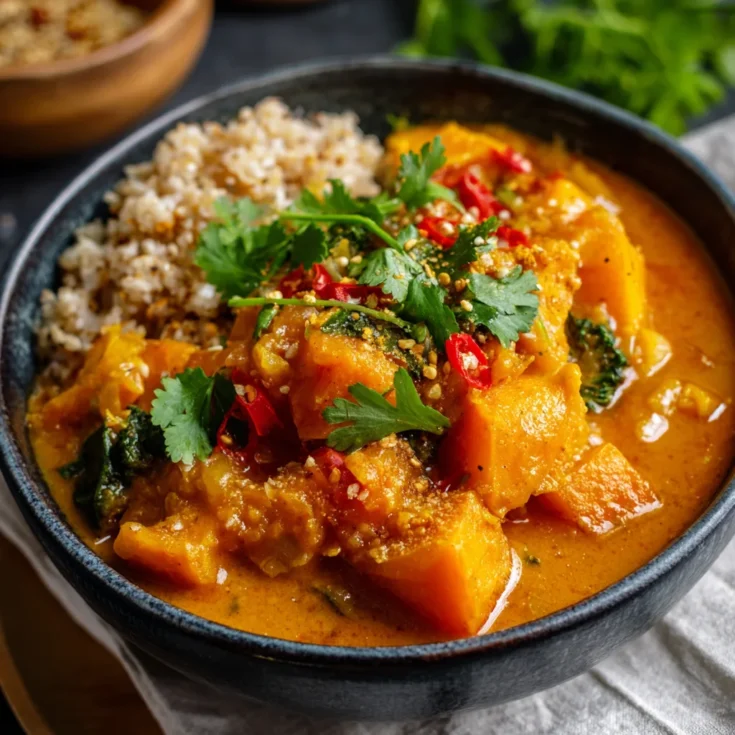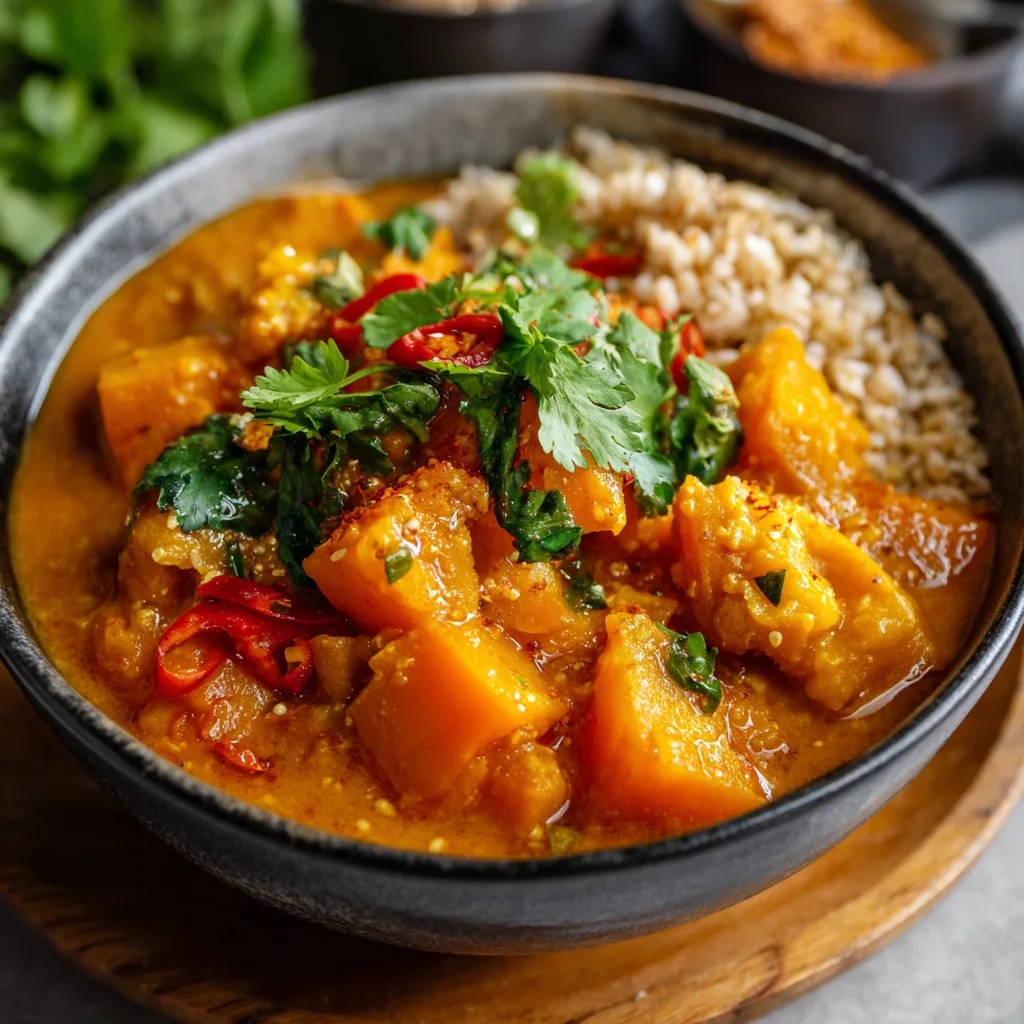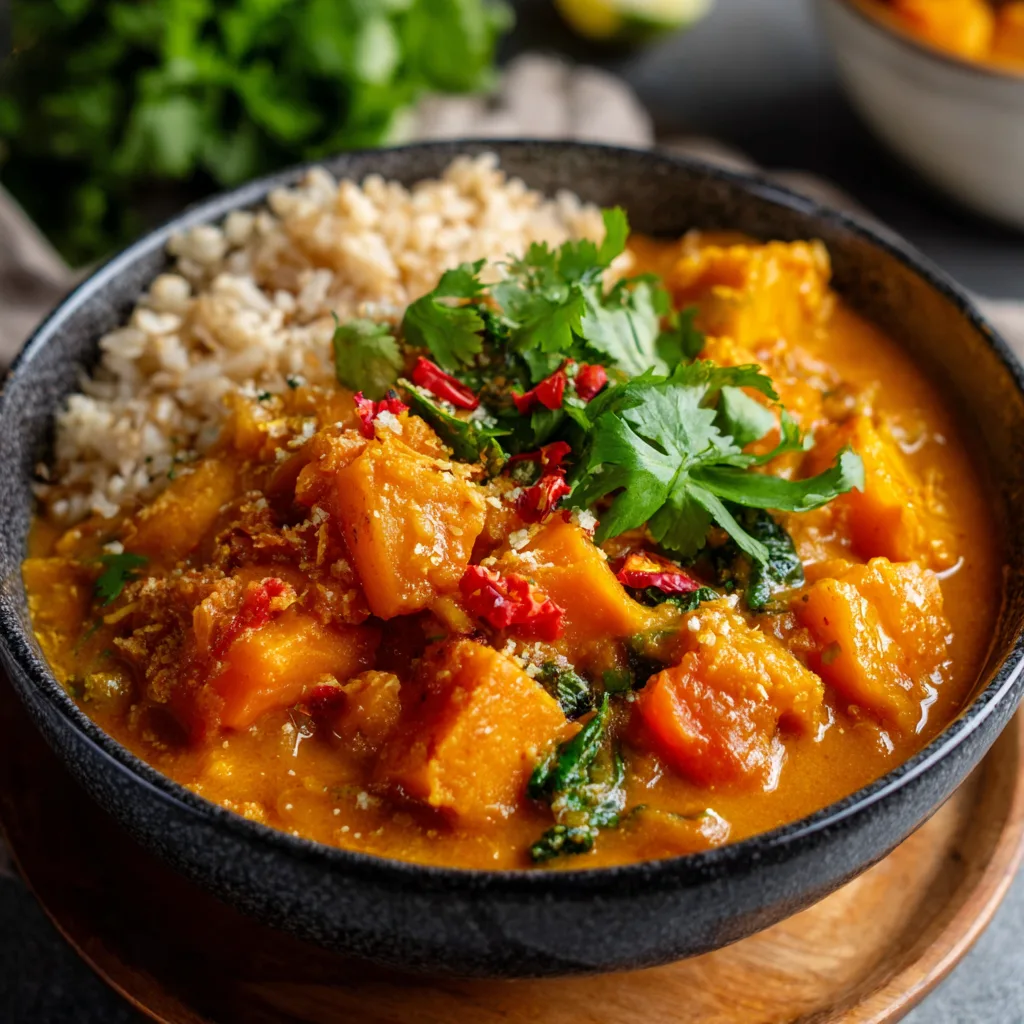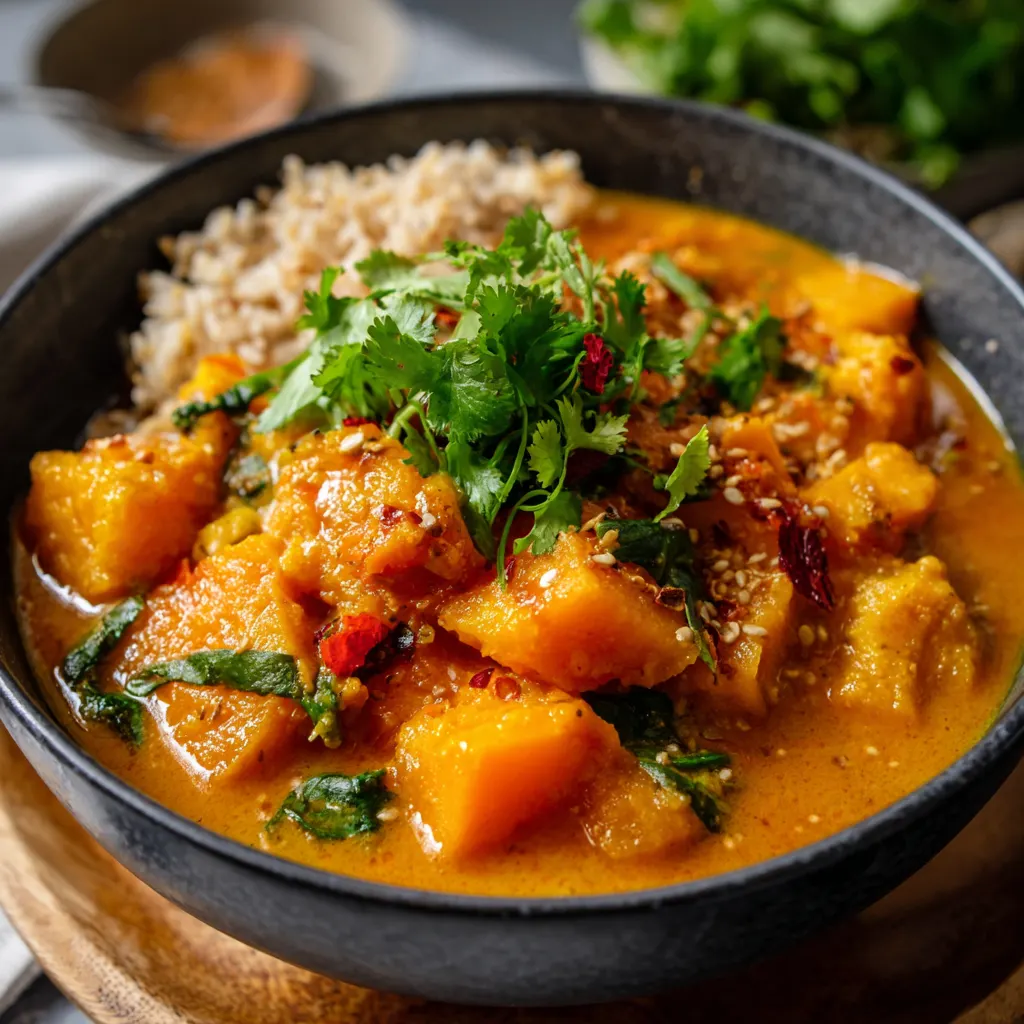Baked Healthy Pumpkin Curry – A Delicious and Nutritious Twist on Traditional Curry
Pumpkin curry has long been a beloved dish across many cultures, cherished for its rich flavors and comforting warmth. This vibrant, spiced stew typically combines tender pumpkin pieces with an array of aromatic spices, creating a harmonious blend that satisfies both the palate and the soul. While stovetop pumpkin curries remain popular, baking this dish introduces a unique, healthful spin that elevates its flavor and nutritional profile.
Baking pumpkin curry offers several advantages. It allows the natural sweetness of the pumpkin to intensify while gently melding with spices, creating deeper, more complex tastes. Additionally, baking requires less oil than frying or sautéing, making it a lighter, healthier option. This method also preserves more nutrients compared to high-heat stovetop cooking, enhancing the dish’s overall health benefits.
Pumpkin itself is a nutritional powerhouse. Rich in vitamins A and C, fiber, and antioxidants, pumpkin supports immunity, aids digestion, and promotes healthy skin. Combining these benefits with wholesome spices and healthy cooking methods results in a dish that’s as nourishing as it is delicious.
In this article, we will explore what makes baked healthy pumpkin curry a standout dish. You’ll learn about the key ingredients that pack nutrition and flavor, preparation techniques that maximize health benefits, and tips to create your own version. We’ll also discuss variations for different dietary needs and answer common questions to help you enjoy this comforting meal with confidence.
What Makes Pumpkin Curry Healthy? Nutrients, Spices, and Cooking Methods
Pumpkin curry’s health benefits stem largely from its ingredients and cooking style. Pumpkin provides essential nutrients like vitamin A, which supports vision and immune function, along with fiber that promotes digestive health. Antioxidants in pumpkin fight inflammation and protect cells from damage.
Using wholesome ingredients further boosts the curry’s nutrition. Aromatic spices such as turmeric, cumin, and coriander add antioxidants and anti-inflammatory compounds while enhancing flavor without extra calories. Swapping traditional cream for coconut milk or yogurt alternatives cuts saturated fat and calories.
Baking the curry offers distinct health advantages over stovetop cooking. This method uses less oil, reducing overall fat intake. The slow, even heat of the oven helps ingredients meld naturally, intensifying flavors without burning or overcooking delicate nutrients. As a result, baked pumpkin curry combines maximum taste with optimal nutrition in every bite.
Nutritional Advantages of Baked Pumpkin Curry: Boost Immunity and Support Health
Baked pumpkin curry offers more than delicious flavor—it’s packed with nutrients that promote overall well-being. Pumpkin is rich in vitamin A and C, which play vital roles in strengthening the immune system. These vitamins help the body fight infections and heal faster. Additionally, pumpkin’s high fiber content supports healthy digestion by regulating bowel movements and encouraging beneficial gut bacteria.
The spices in pumpkin curry, such as turmeric, cumin, and ginger, provide powerful anti-inflammatory effects. Turmeric’s active compound curcumin has been studied for reducing inflammation linked to chronic diseases. These spices also aid digestion, soothe the stomach, and may improve metabolic function, enhancing the dish’s health benefits.
Furthermore, baked pumpkin curry has a low glycemic impact. The fiber-rich pumpkin and legumes slow down sugar absorption, making it suitable for weight management and blood sugar control. This dish keeps you full longer, reducing overeating and supporting healthy weight loss goals.
How to Store and Reheat Baked Pumpkin Curry: Preserve Flavor and Texture
To keep your baked pumpkin curry fresh, store it in airtight containers. Refrigerate leftovers promptly, ideally within two hours of cooking. Properly stored, the curry lasts 3 to 4 days in the fridge. For longer storage, freeze portions in freezer-safe containers or bags, where it can remain good for up to 3 months.
When reheating, do so gently to maintain texture and flavor. Warm the curry on the stovetop over low heat, stirring occasionally to prevent sticking. Alternatively, microwave in short bursts, stirring between intervals. Adding a splash of water or broth can help loosen thickened sauce. Avoid overheating, as this may cause the pumpkin to become mushy or dry out.
Check for signs of spoilage before reheating. Discard the curry if it develops an off smell, mold, or a slimy texture. These indicate bacterial growth and unsafe consumption.
Serving Ideas and Meal Planning: Delicious and Balanced Meals
Incorporate baked pumpkin curry into your weekly meal prep for nutritious, ready-to-eat options. Its robust flavors often improve overnight, making it ideal for make-ahead lunches or dinners. Portion into single-serving containers for convenience.
Pair the curry with whole grains like brown rice, quinoa, or millet to add fiber and protein for a balanced plate. Fresh side salads or steamed greens complement the dish by adding crunch and vitamins.
This versatile curry suits various occasions—from casual family dinners to meal plans for vegetarian or gluten-free diets. Its rich taste and healthful ingredients make it a satisfying choice for nourishing everyday meals or special gatherings alike.
FAQs About Baked Healthy Pumpkin Curry
What type of pumpkin is best for baking in curry?
Sugar pumpkins and kabocha squash are ideal for baked pumpkin curry. They have a firm texture and sweet flavor that hold up well during baking, ensuring tender, flavorful chunks without becoming mushy.
Can I make baked pumpkin curry vegan and gluten-free?
Absolutely. Use plant-based proteins like chickpeas or tofu and swap dairy ingredients with coconut milk or plant-based yogurt. Ensure all spices and packaged items are gluten-free to keep the dish safe for gluten-sensitive diets.
How long does baked pumpkin curry last in the fridge?
Stored in airtight containers, baked pumpkin curry stays fresh for 3 to 4 days when refrigerated. Be sure to cool it quickly before refrigerating to maintain quality and safety.
Is baked pumpkin curry spicy? Can I adjust the heat?
The spice level is flexible. Traditional recipes include warming spices like turmeric and cumin, which are mild. You can add fresh chili, cayenne, or chili powder to increase heat or omit spicy ingredients for a milder dish.
Can I freeze baked pumpkin curry? How do I reheat it?
Yes, freezing works well. Portion the curry into freezer-safe containers and store for up to 3 months. Reheat gently on the stovetop or microwave, adding a little water or broth if needed to maintain the right consistency.
What are the health benefits of pumpkin curry?
Pumpkin curry offers immune-boosting vitamins, digestive fiber, and antioxidants from both pumpkin and spices. It has anti-inflammatory properties and a low glycemic impact, supporting weight management and overall health.
Can I use canned pumpkin instead of fresh pumpkin?
You can use canned pumpkin puree, but note the texture will be smoother and less chunky. For baked curry, fresh cubed pumpkin is preferred to maintain the dish’s hearty texture and appearance.
Baked Healthy Pumpkin Curry Recipe – Flavorful, Nutritious & Easy

A wholesome baked pumpkin curry bursting with aromatic spices, fresh vegetables, and creamy coconut milk, perfect for a nutritious and comforting meal.
Ingredients
- 4 cups cubed pumpkin (sugar pumpkin or kabocha)
- 1 cup cooked chickpeas
- 1 medium onion, chopped
- 1 bell pepper, diced
- 2 cloves garlic, minced
- 1 tsp turmeric powder
- 1 tsp cumin powder
- 1 tsp coriander powder
- 1 tsp garam masala
- 1-inch piece fresh ginger, grated
- 1 can (13.5 oz) coconut milk
- 1 tbsp olive oil
- Salt and pepper to taste
- Fresh cilantro, for garnish
Instructions
Notes




